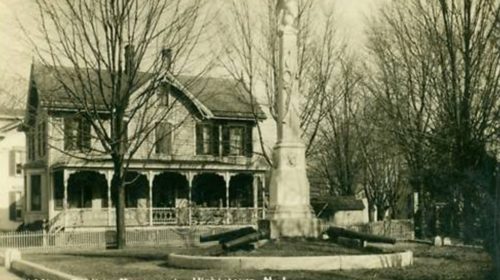
Dry ice cleaning is used to clean metal and ceramic artifacts before they are displayed at Auschwitz-Birkenau Memorial
THE SITUATION
Months after the end of World War II, the Polish Ministry of Culture and Art sent a group of former Auschwitz prisoners to the Auschwitz camps to establish a museum. In early 1947, the Polish government presented a plan for the museum that would memorialize the millions of Jewish victims who died at the camps and during the war. The museum officially opened in June 1947, and in 2010, nearly 1.4 million people visited the camps, the preservation of which is among the top priorities of the museum.
According to the museum’s 2009 annual report, “The authenticity, upkeep, protection, and conservation of this place are a great obligation for the entire world. After the passage of more than 60 years, ensuring the continuity of conservation work is necessary for preserving the most tragic legacy of the 20th century for future generations.”
THE PROBLEM
The museum is currently in the middle of a global conservation and preservation project of the Auschwitz-Birkenau camps, which include 155 buildings and thousands of objects from prosthetics and glasses to cookware and art. Among the many projects taking place at Auschwitz is the development of a new main exhibition hall that will house the numerous artifacts being gathered from across the grounds.
The new exhibition hall will display authentic objects, photographs and documents all supported by statements and memoirs of prisoners. Before the artifacts and objects can be displayed, they need to be cleaned. In lieu of water and chemical cleansers that can potentially harm the artifacts, which include prisoners’ metal bowls and spoons, and ceramics, the museum turned to Cold Jet and ACP, Europe’s leading producer of liquid carbon dioxide and dry ice and a distributor of Cold Jet dry ice cleaning systems.
“The preservation of the Auschwitz artifacts is important from historical and social perspectives as the museum works to provide its more than one million annual visitors with a clear understanding of the atrocities that took place in the camps, as well as an honorable way to memorialize the victims,” said Dietmar Juchmes, General Manager of Cold Jet Germany. “It is important for Cold Jet to be involved in this project to demonstrate our commitment to social causes by using our modern technology to preserve the past.”
THE SOLUTION
Recognizing the global significance of this cultural renovation project, Cold Jet and ACP provided the museum with a Cold Jet i3 MicroClean precision dry ice cleaning system and the dry ice at special discounted pricing.
Conservators at the museum are using the i3MicroClean system and dry ice from ACP to clean the metal and ceramic objects prior to putting them on display. The museum is also planning to use dry ice cleaning for maintenance of the facilities housing the new main exhibition.
The i3MicroClean system uses reclaimed CO2 in the form of solid dry ice particles accelerated through a hose and high-velocity nozzle to remove coats of resin from metal objects and dirt from ceramic artifacts without damaging the metal or ceramic. The cleaning system cleans without abrasion or moisture and upon impact with the object being cleaned, the dry ice sublimates, eliminating the added cost and environmental impact of secondary waste treatment and disposal.
Among the many benefits of Cold Jet’s dry ice cleaning systems is that they are safe and effective to use on a variety of applications from cleaning delicate materials and restoring artifacts to removing weld slag from automobile assembly lines. For this particular project, it was important that whatever was used would not in any way harm the objects being preserved.
Dietmar Juchmes added, “Our dry ice cleaning systems have been used to restore everything from soot-covered books damaged in fires and raised wreckage to established landmarks. Each presents a unique challenge that has been successfully tackled by one of our dry ice cleaning systems.”
THE RESULTS
Upon receiving the Cold Jet system, the museum public relations officer Bartosz Bartyzel commented, “It is a unique technology. Dry ice is a safe substance suitable for cleaning even the most sensitive surfaces. It effectively cleans and does not damage the object. Our Conservatory tested this device for some time, and it handles well dirty metal objects such as prisoners’ bowls or spoons or ceramics.”
Aleksandra Papis for the Auschwitz-Birkenau Memorial and State Museum added, “Our modern laboratory and skilled restorers are working to find the best and safest methods for restoring all aspects of the camps. After significant testing of the Cold Jet system, we were satisfied with the ability to clean many of the unusual objects that will be displayed throughout the museum. We found dry ice blasting to be cleaner and less abrasive than other methods, and we will continue to find new ways to use the system for general maintenance and throughout the duration of the cleaning and preservation project.”
The use of dry ice cleaning as part of this restoration project enhances the museum’s ability to quickly and safely clean its vast inventory of important cultural and historical artifacts. Cold Jet, ACP and the museum are pleased with the way the system has performed on the artifacts and will continue to work together to find ways to leverage the technology for this historically and culturally significant restoration project.
